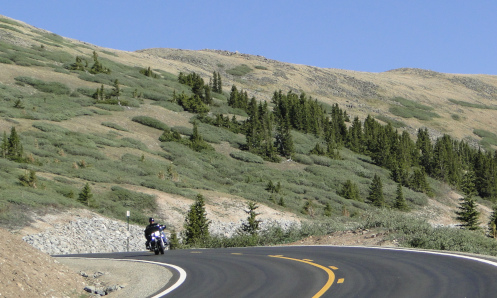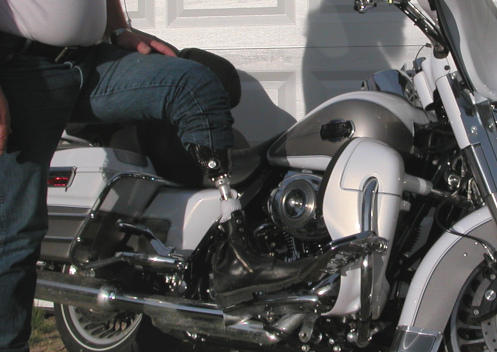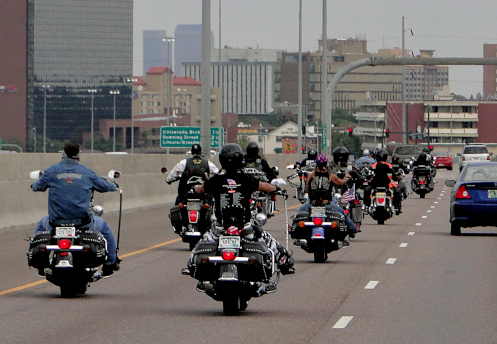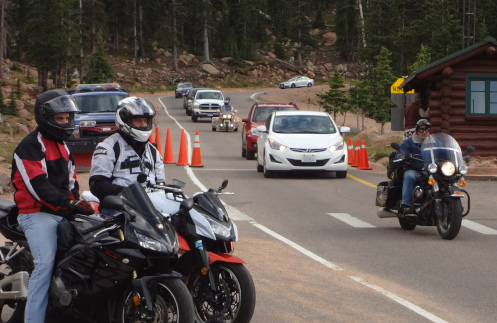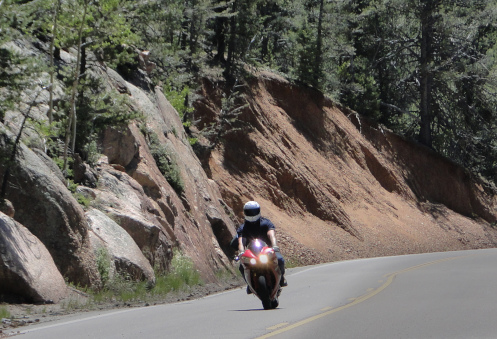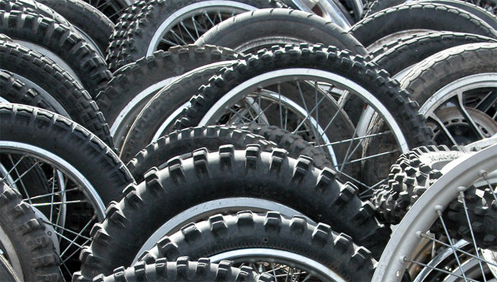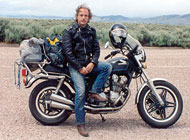Those Flying Objects — Again!
Monday, May 24th, 2021With the weather warm and everyone getting back out on the road it’s time once again to be aware of the hazards. Here’s another installment of the crazy things motorcyclists have encountered on the road, courtesy of Adventure Riders.
- Freaking goat was standing in the middle of the road recently! Fairly big dude with a serious set of horns. Figured he got out of someone’s pasture and was wandering so I stopped, he didn’t get aggressive when I approached (ATGATT, helmet still on) so I led him to the side of the road and down a driveway. Called 911, local sheriff laughed when I told them what I found. I said – your problem, I’m leaving and rode away.
- I found a pig wandering down the Middle of the Blue Ridge Parkway near the VA/NC border. When I finished laughing I stopped. Pig came running up, obviously someone’s pet. Texted a picture to my wife – she said hell no! So I called the rangers and rode away.
- This summer I was T-boned by a domestic sheep. Scooted the back end sideways but that’s it. In the spring in a canyon going to Red River, NM a Big Horn sheep ram challenged a couple on a Harley. The ram did a head on with the bike, sent the woman over the handlebars and she died. Crazy Big Horns will run into anything, moving or sitting still!
- I’m not sure if this counts. I was riding in The Villages FL. I was stopped at a traffic signal minding my own business and some old dude side swipes my front wheel while crossing the intersection in his Yamaha golf cart. This was a Hit & Run! I was laying on the ground laughing in disbelief at what just occurred. I wasn’t hurt, just amazed at golf cart traffic in that retirement community.
- I hit something with my chest while road riding in eastern PA several years ago. I’m not sure what it was, because it exploded. It was about softball sized covered in fur, full of blood, and suspended in midair in the middle of the day. My guess is either a confused bat or an unlucky squirrel that had fallen out of a tree at just the right time for me to intercept it.
- I was riding 100′ behind my son in North Washington and watched a huge Bald Eagle swoop off it’s nest, down toward my son and extended it’s talons and swept inches by his helmet. Like he was trying to pluck a fish from the water. That thing had a 4-5′ wingspan. Never a camera on when you need it.
- Night time. Three lanes of traffic. Arlington Va. Two lanes full of tractor trailers. I’m in the #1 lane just whizzing by, minding my own business when the trucks swerve partly into my lane as I’m even with the lead truck’s cab. Just then, I see what I thought was a paper bag blowing around in my lane, but it was a big hub cap, spinning and skittering all around in front of me. I barely managed to not get hit by the truck, swerve my way around the hub cap, just in time for the little sedan that had the tire blow-out and subsequent hub cap ejection, to swerve into my lane, missing me by literal inches.
- On a very windy afternoon ride home on I-580 many years ago, I was drafting a pickup towing a boat. Evidently, the boaters had left a number of bags of groceries in the open boat and the wind was whipping them around/tearing them up. The truck rolled over a chunk of lumber laying in the road and when the trailer hit it, something popped up out of the open boat. As I swerved to avoid the hunk of 2×4 in the road, a full can of beer went sailing by inches from my head. I saw the can explode in my mirror when it hit the pavement behind me.
- Buzzard. Buzzards actually. On my 250, I hit two of them in one day. For some odd reason, the were running across the road and I hit them with my left footpeg and foot. You would think that they would cross at crosswalks, but NOOOOO. They have to cross wherever they damn well please. No self discipline whatsoever. But then I hit one on my Beemer. I live in the Ozarks and was having way too much fun on a roller coaster road. Came up over a steep hill and saw some movement on my left. Hit the brakes and watched it fly right into my clutch lever, explode, roll up my arm and smack me in the helmet. Hit hard enough that I saw stars and repeated the mantra ” don’t pass out, don’t pass out, don’t pass out” until I could pull off to the side of the road. Put the sidestand down and fell off of the bike. Crawled over to the side of the road, drank water and breathed deeply for awhile until recovered. I was getting tired of the stench of the feedyard I had parked next to until I realized there was no feedyard nearby. The front of my jacket was covered with buzzard guts and whatever it had for lunch. I skipped lunch that day.
- Magpie, at speed and it flew through my front wheel, well part way through anyway. Then I had to put up with the smell of KFC for the next 40km, stopped for gas, went into pay and the guy at the cash register leapt backwards. “Um?” He couldn’t speak, just pointed at the mirror behind one of the racks, yeah I took a step back as well, covered in blood and feathers. I looked like a walking satanic ritual.
Yep. Ride motorcycles. Come for the fun; stay for the excitement!
Biker Quote for Today
You know you’re a biker if when she says “It’s the bike or me!!” you have to think about it really hard.
